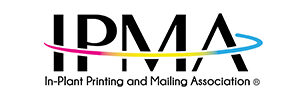RSA recently sponsored an IPMA webinar called, “What Data Matters in 2020?” (session replay and slides available in the IPMA member community) where Keypoint Intelligence offered three steps for in-plants to be successful this year (know your “numbers,” find growth applications and optimize production) based on findings from in-plant and PSP responses to their 2020 North American Software Investment Outlook survey.
I wanted to expand on the topic, in particular “knowing your numbers” and optimizing production.
Keypoint Intelligence noted in the research report that “Printers experiencing growth typically have processes and software solutions in place to collect, monitor, and react to operational and financial indicators. The differences between growing and declining business [based on sales] appear to favor companies that can monitor more often and respond more quickly to leading (instead of historical) indicators. …Keypoint Intelligence’s Production Workflow service believes that shops that can accurately capture business-critical data and implement corrective actions for continual improvement will be far better positioned over the coming decade.”
And yet, 46% of the in-plants who responded to the survey are manually tracking performance through job tickets and 13% of in-plants don’t track operational performance at all.
Knowing your “Numbers”
So where do you start if you are not collecting operational data? How do you automate the process so that you have the information continually at your fingertips? Ryan McAbee, Director for Keypoint Intelligence – InfoTrends’ Production Workflow Consulting Service offers three tips to start being more “data-driven” (manage by numbers and data rather than intuition):
- Determine the what, why, how, who, and when of your data collection
- Identify the tools you will use to collect the information and match the right software tool for the job to avoid duplicating efforts
- Set the frequency for collecting the data.
Once you’ve set yourself up to collect data, then you can begin tracking and analyzing so you can make improvements.
Optimize Production and Increase Efficiency
In RSA’s new white paper, “Using your In-plant Data to Improve Efficiency” we show you how you can increase your efficiency by using your shop’s production data on an ongoing basis (our Web to print software, WebCRD does this automatically) to optimize production. Having the information can help you get to the root cause of issues such as why you may not be meeting your on-time deliveries/SLA.
One you’ve collected your data you can generate your key performance indicators and analyze the data. Some examples of the key performance indicators (KPIs) and data analysis that you can generate by using this kind of operational data include:
- Basic volume over time – B/W, color, wide format, revenue, jobs, and orders
- Operator interactions with the system to process jobs
- Orders and revenue by departments and customers
By looking at the data in a graph or dashboard, you may be able to identify trends or issues that were not evident by looking only at the data.
Then, review your production workflows with the goal of removing any non-value add steps in the production process. Look to remove manual steps like reticketing jobs, printing job sheets, and imposing catalog jobs and take advantage of automation that can be set up in your workflow software. For instance, In WebCRD we have a feature called AutoFlow™ that is an automation rules engine that can send a job to a printer without an operator taking any action.
Taking these steps will help you collect the data you need to “know your numbers,” optimize production and improve your efficiency.

Elisha Kasinskas is Rochester Software Associates’ (RSA) award-winning Marketing Director. Ms. Kasinskas joined RSA in 2010 and holds an RIT MBA and a BS, Marketing from Radford University.
Kasinskas is a frequent moderator for industry speaking sessions, an in-plant blogger, and has received industry awards including the IPMA Outstanding Contributor Award and was an Outputlinks Women of Distinction class of ’15 inductee.
